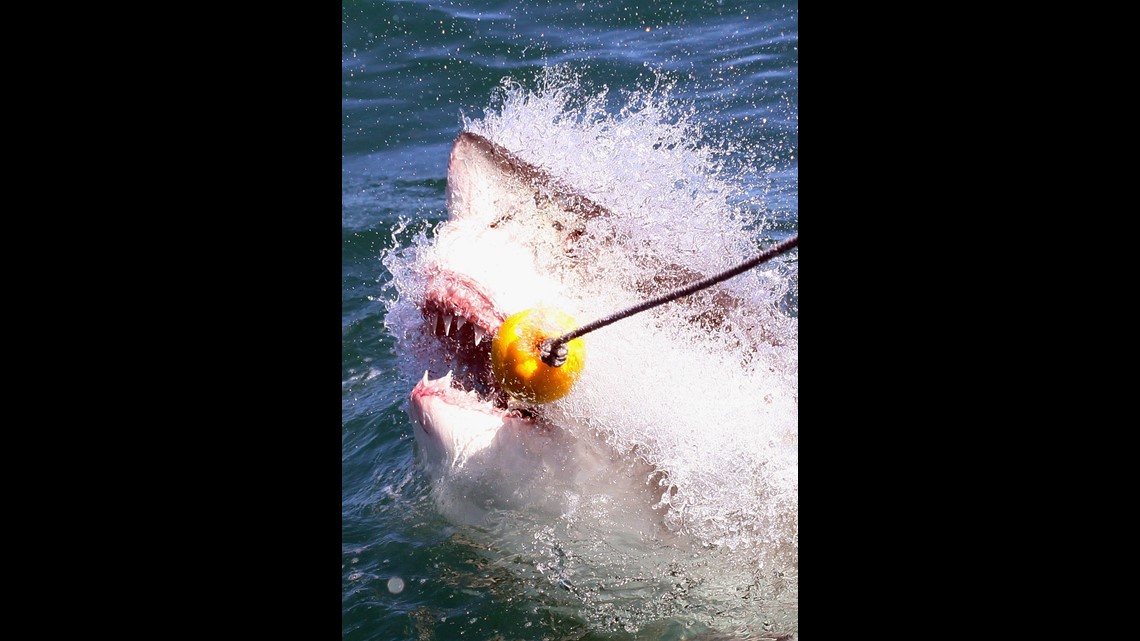

When sharks are attacking people in record numbers, as happened this past year, it makes sense to blame the sharks.
That doesn’t make it fair, though.
The International Shark Attack File on Monday reported an unprecedented number of unprovoked shark attacks worldwide, with 98 incidents — a whopping 26 more than the previous year and 40 more than the figure from one decade prior.
Does this mean sharks are getting less shy around humans? Increasing in number? Or becoming more aggressive?
Not necessarily, according to the group that compiled the statistics.
“The numerical growth in human-shark interactions does not necessarily mean there is an increase in the rate of shark attacks,” said the report from the ISAF, which is run through the Florida Museum of Natural History. “It most likely is a function of the growing human population.”
In other words, when you have more humans — specifically, more humans who go swimming in the world’s oceans — you’ll likely have more shark attacks.
Warmer waters ‘a double whammy’
That’s not to say, though, that there’s been a consistent uptick in such attacks from year to year. That figure ebbs and flows, oftentimes going up (or down) by double digits on any given year.
Still, the general decades-long trend is unmistakable. So, too, is the fact the 2015 number of shark attacks dwarfs that of any other year. And there’s good reason for that, according to George Burgess, the International Shark Attack File’s curator.
“We had a double whammy of warming water temperatures,” Burgess said.
He cited the global weather phenomenon known as El Niño, which has the general effect of heating up ocean waters. For sharks who like it warmer, that means they end up in more places (more north in the Northern Hemisphere, more south in the Southern) than they would otherwise. For people, they’ll be at the beach more often (earlier and later in the season, plus across a wider swath of territory).
And when you have more people on the planet, overall, it means more opportunities for them to interact with sharks. That’s true in a place like Florida, now the nation’s third most populous state, which had the majority of all U.S. shark attacks last year — 30 — and alone had over 30% of the worldwide total. In the United States, North and South Carolina tied for second place, each with eight attacks logged in their coastal waters.
As Burgess, who’s also the head of the Florida Program for Shark Research, explains: “It means there’s more time for sharks and humans to get together.”
59 U.S. attacks, but only 1 death
Contrary to what you may remember from the movie “Jaws,” sharks and human interactions don’t have to be fatal.
In fact, ISAF recorded only six such deaths last year. That’s in line with the historic average, and well below some other years (like 10 fatalities in 2000 and 2014, or the 13 in 2011).
The United States only had one death in its 59 documented shark attacks (which can be anything from a deadly bite to a mere nudge), meaning you’re better off getting bit there than most anywhere else if you want to survive.
“We’re doing a much better job of saving people’s lives,” said Burgess, crediting medical advances dealing with such massive trauma in recent decades.
It matters a lot, too, what kind of shark bites you. When great whites, grey reef and tiger sharks “bite, they mean business,” said Burgess, but thankfully relatively small and innocuous fish-eating sharks like spinners or blacktips aren’t as dangerous.
While the attacks are considered unprovoked — meaning a person didn’t jump on or grab hold of a shark — they didn’t come out of the blue. The sharks are drawn to splashes big and small, which is why surfers (in addition to the fact they’re in the water so much) often get bit.
Long-boarders see fins pop up regularly, so much so that it’s not reason for alarm or even reason enough to get out of the water. And if one of them do get nipped, they understand it’s not all on the shark.
“When they get bit,” Burgess said of surfers, “almost to a man and a woman (they) come out and they don’t blame the shark.”
Expert: Expect ‘a lot more’ attacks long-term
Nor is it because there are more sharks around.
Worldwide, the number of sharks has dropped over the years because of humans, who catch them to take their fins or inadvertently snare them in fishing gear. It’s a little bit of a different story in the United States, where conservation measures have halted and, in some cases, reversed this decline.
The hope is that the number of sharks will ultimately increase, ideally, to levels of past centuries. This is important given their role, as an apex predator, in maintaining balance in the Earth’s oceans.
If their numbers do go up, said Burgess, “You really can’t blame the sharks quite yet (for more attacks), but you maybe can in the future.”
He expects the number of shark attacks will be lower in 2016, because of changing global weather conditions. But long-term, Burgess promises, there should be more of them — because there will be more humans to be bitten, and most likely more sharks to bite them.
“Over the coming years,” he said, “we’re going to see a lot more of these attacks.”
